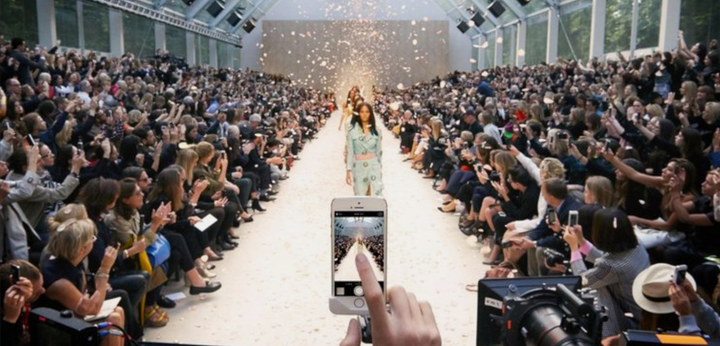
Fashion has changed. For better or for worse remains to be seen but there is evidence abound that the industry has gone through a transformation because of social media and one that may last forever as we become more and more technology dependent.
How so? The traditional gatekeepers of the industry were well trained editors and experienced designers but that seems to be changing lately. Allure, for instance, pushed out its founding editor of 24 years in 2015 and the position was handed to a younger, digitally-accustomed editor and more space was created for writers with greater online experience. Burberry, another fashion powerhouse, openly admitted this year that they hired David Beckham’s now 17-year-old son to photograph their latest campaign not because he was some boy genius but because of his close to 6 million followers on Instagram. That shift is happening because major fashion houses understand the very real influence of social networking sites and the blogosphere on the customer. Market research firm Mintel released a report last year in which they discovered that more than 35 percent of millennial women in America say social media is one of the top influencers when making clothing purchases. Another recent report, this time from the UK, reveals that women are increasingly adopting ‘wear it once culture’, binning clothes after only a few wears so they aren’t pictured in the same outfit twice on social media.
So who is behind online media? It’s everyday users but more importantly it is the army of bloggers and social media celebrities - some small, some growing and some earning upwards of a million dollars per year - who have no formal training or experience except the ability to post content online. Chiara Ferragni is one such blogger who started her fashion blog in 2009 while still at law school and was named as the blogger of the moment by Vogue two years later. She has no known background in fashion but her social media credentials are significant. Her blog is now worth $8 million, she gets 500,000 unique visitors every month and has about 7.4 million Instagram followers. Success, however, is rare in the world of social media influencers.
The market is so saturated with new bloggers wanting to break into the industry that one blogger, Rachel Lynch, disclosed in a new study, that a company that used to pay her asked her to do a new promo but this time without compensation for her services. According to that new study, companies expect to pay little to nothing to influencers in exchange of their services and those lucky enough to find a gig often have to work upwards of 100 hours per week at times responding to comments in the wee hours of the morning to keep the conversation going, which is an essential part of their work. Getting advice from a blogger instead of a company gives the customer the authentic feel that they really crave but what most customers don’t know is that behind a seemingly casual post goes hours of thinking and crafting. The post may give an impression of spontaneity. In reality it is anything but.
Traditional means of fashion marketing and literature are eroding and the use of mostly unpaid online labor is becoming a major part of a company’s advertising strategy. So much so that Smashbox, a cosmetics company, walked away from traditional print media altogether two and a half years ago.
Still big names in fashion call out that same labor for the worries of the fashion world. Vogue’s current creative digital director recently said that bloggers are “heralding the death of style.” She said that despite the fact that one of the most commented photo on Vogue Magazine’s instagram account was a street style picture of two fashion bloggers holding hands at the New York Fashion Week in 2015. What worries fashion houses the most is the loss of control and influence and hence the loss of sales. In 2015, Neiman Marcus blamed bloggers for making their merchandise prominent on social media that by the time the product hits the store shelves the interest of the customer has waned.
The industry is moving fast to reclaim their power. Google is launching a new program to allow brands themselves to control what consumers see first in search results specially around the time of prominent events like Fashion Week. Instagram’s new algorithm will provide detailed insights into how users engage with paid posts, which is a key metric in the industry, in addition to just showing the number of likes or comments cause it’s very difficult to estimate the return on paid posts at the moment. That way influencers would have to provide brands with rigorous analytics to justify their fees.